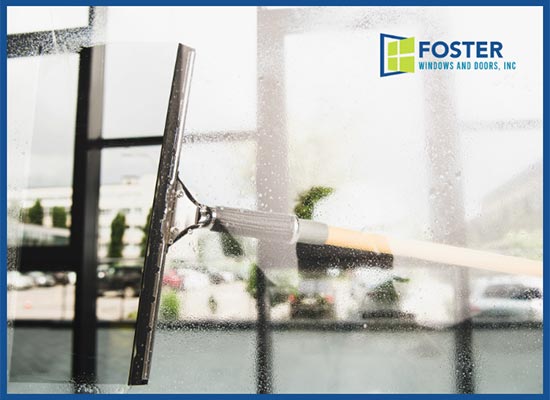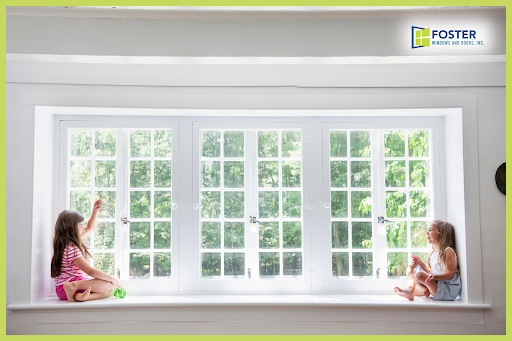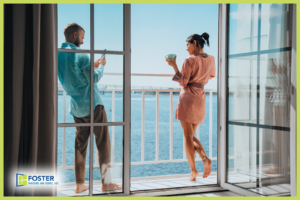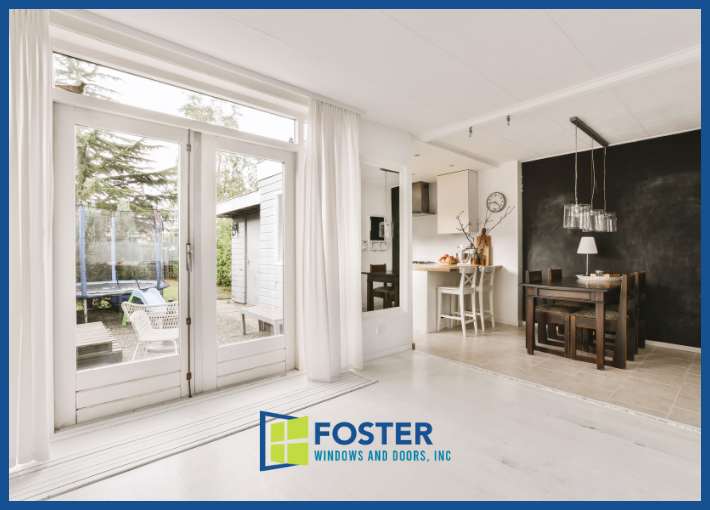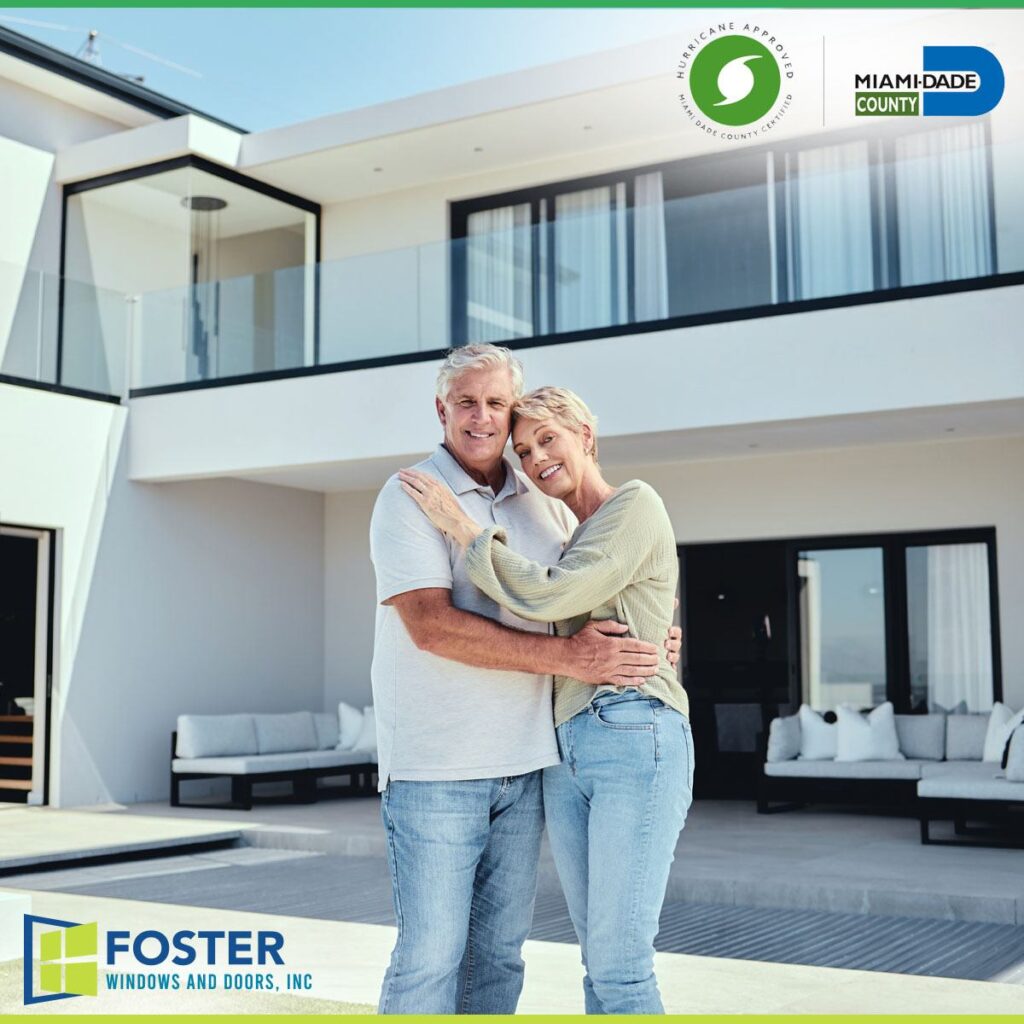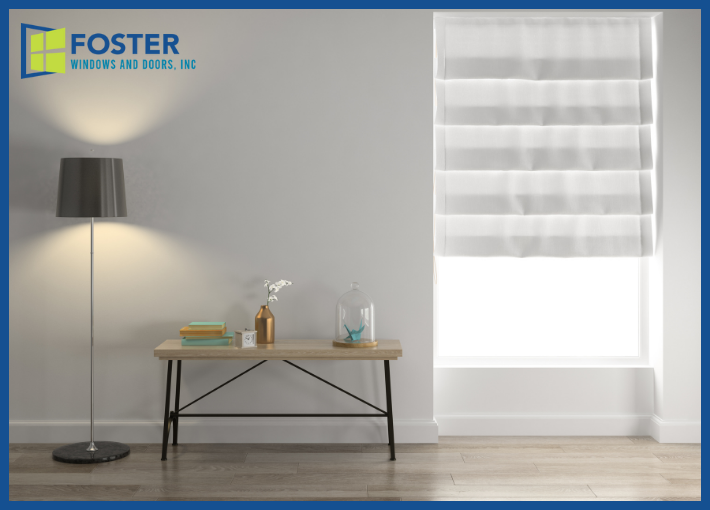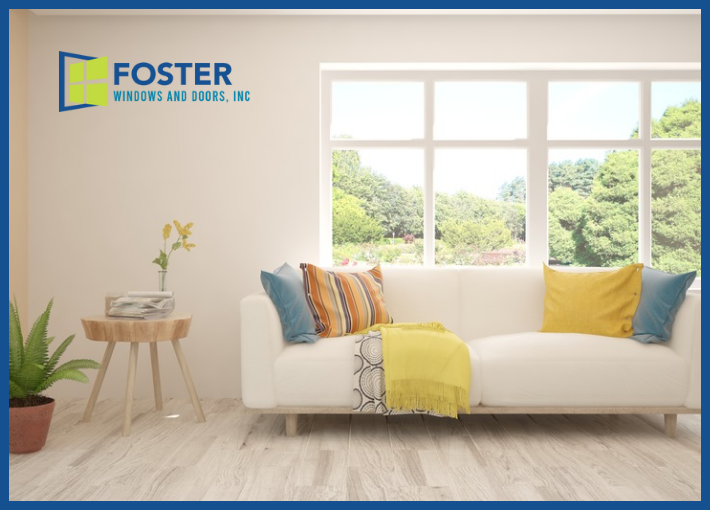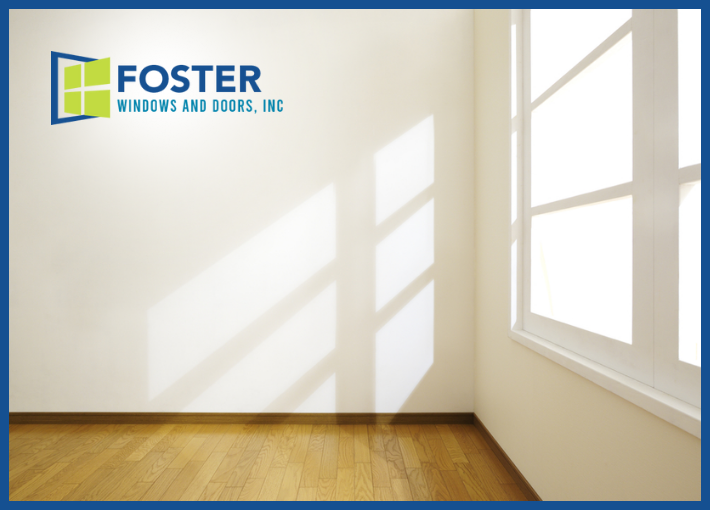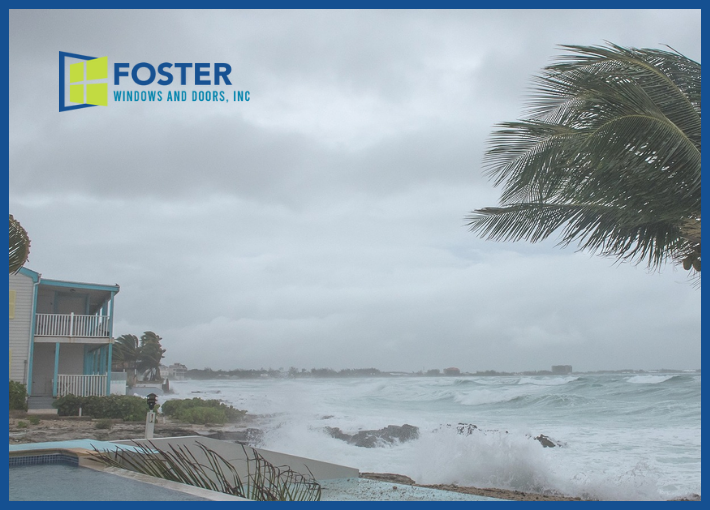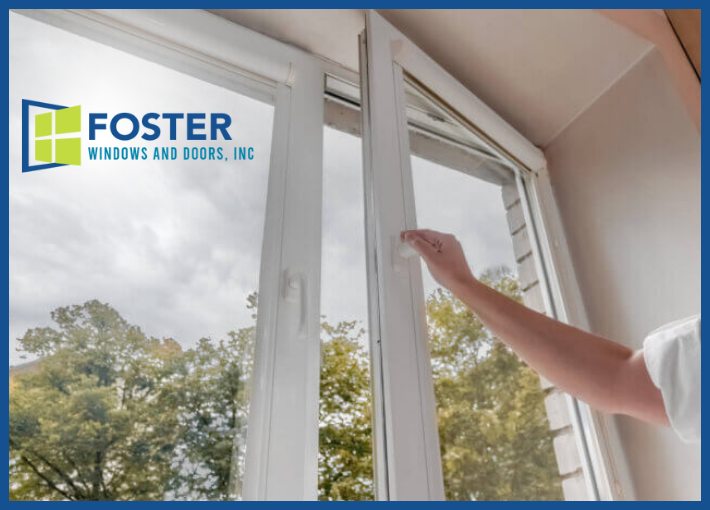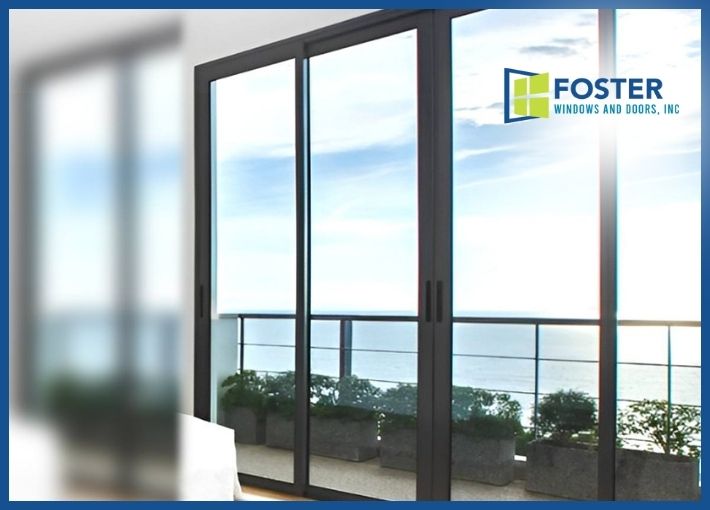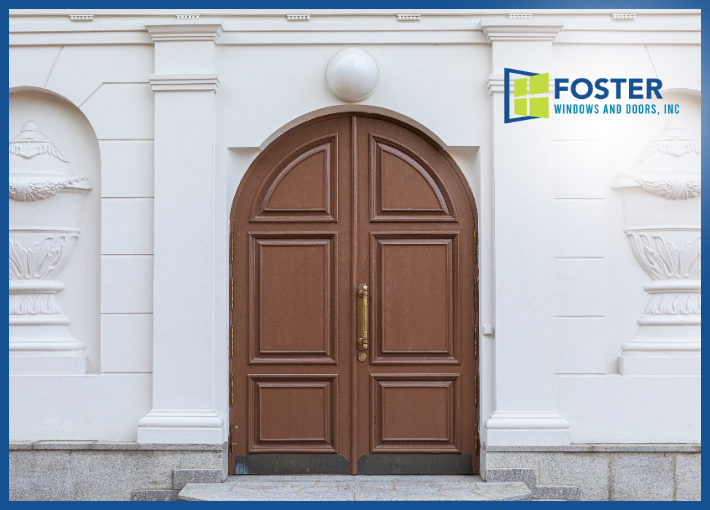Replacing windows can be a significant investment, and you want to ensure that sparkle lasts! Keep your beautiful new windows gleaming like the day they were installed. Read below and unveil the secrets to sparkling transparency and a crystal-clear view of the world outside.
How to Clean Windows
Even if the sun is shining, you may not get as much natural light in your home as you otherwise would if your windows are covered in a film of dirt, dust, splattered bugs, or water spots. To get the most out of the brighter, longer days and the lush green views outdoors, washing windows is at the top of our spring cleaning list—and it should be on yours, too.
Fortunately, learning to wash windows is fairly easy. There are many commercial glass cleaners on the market, all of which promise to impart a “streak-free shine.” But we have also found that a simple DIY window-cleaning solution—one part white vinegar to two parts water—works well too.
Whether you choose store-bought or a DIY window cleaner, these tips and techniques for how to clean windows inside and out will make the job go quickly and easily.
How to Clean the Inside of Windows
1. Fill a bucket or large pot with clean, warm water and add a few drops of liquid dish soap.
2. Place a large bath towel under the window to catch any spills.
3. Dip a clean microfiber cloth or sponge into the soapy water and use it to go over the surface of the window, starting at the top and working down to the bottom. “Microfiber cloths are excellent for drying and polishing windows without leaving lint or streaks behind,” says Angela Rubin, of Hellamaid, a Canadian deep cleaning company. Don’t forget to wipe down the frame, inside and out.
4. Spray the window thoroughly with the vinegar and water solution, or a commercial window-cleaning product (our tested guide to the best glass cleaners has some terrific recommendations). Another DIY solution is to mix one capful of ammonia with two gallons of water.
5. Using a clean, lint-free towel (or the black-and-white pages of a newspaper), dry the window completely using a Z-shaped motion. You also can use clean paper towels to dry the windows, if you prefer. If dirt or streaks remain, spray and dry again. Dirty windows typically require two rounds of spraying and drying.

How to Clean Outside Windows
If your spring cleaning routine includes washing windows from the outside, know that the process is a bit different than cleaning windows from the inside.
1. Using a garden hose, rinse the windows.
2. Fill a bucket with clean, cool water and add a few drops of liquid dish soap. With a soft microfiber cloth, wash the exterior surface of the window. Use a sponge mop (or a soft cotton or microfiber mop) on a pole for higher windows.
3. Rinse the windows thoroughly with the hose.
4. Spray or mop the window glass with the vinegar and water solution or a commercial window cleaner.
5. Wipe the window dry using a clean, rubber-bladed squeegee. “A high-quality squeegee is essential for achieving streak-free results when cleaning windows. Look for a squeegee with a rubber blade and a sturdy handle for better control,” Rubin says. Angle the squeegee toward the bottom of the window and work from top to bottom. Wipe the squeegee with a clean, dry towel after each pass. Alternatively, you can use a clean, lint-free microfiber towel or newspaper pages to dry the windows. “I recommend using a clean, dry microfiber cloth to buff the windows after squeegeeing for a flawless finish,” Rubin says.
6. For stubborn dirt and stains, including bird droppings, saturate the area thoroughly with vinegar and water and let it stand for several minutes before wiping it off. You can also try rubbing with a soft “scrubbie” sponge, like Scotch-Brite Non-Scratch Scrub Sponges. Do not use steel wool or harsh scrubbing cloths; these will scratch the window.
7. Sometimes windows are stained with mineral deposits, particularly in areas with hard water. Your best bet for cleaning windows that are married by mineral deposits is to use a commercial cleaner like CLR Calcium, Lime & Rust Remover, which removes calcium, lime, and rust stains. Follow the manufacturer’s directions for use.
If you’re cleaning windows with grills, start by removing any dirt or debris on the grills using a dry soft-bristled brush. Then use a gentle sponge or clean microfiber cloth in the water and dish soap solution to thoroughly clean the grills. Rinse the window with the hose and dry the grills with a clean microfiber cloth.For tinted windows, it’s essential to “avoid using ammonia-based cleaners, as they can damage the tint,” Rubin says. “Instead, opt for a vinegar-based solution or a commercially available window cleaner specifically formulated for tinted windows.”
How to Clean Window Screens
If you’re going through the trouble of cleaning your window panes, you’ll want to clean the window screens too, otherwise you won’t get a completely clear view through the panes. To clean window screens:
- Remove screens from windows.
- Using a garden hose, rinse the screens with water.
- Spray the screens with a vinegar and water solution.
- Rinse them again with plain water.
- Let screens dry thoroughly before replacing them on the windows.
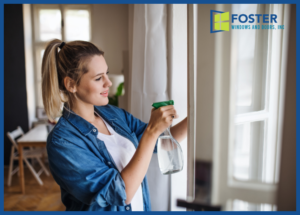
Find trusted local pros for any home project
Mistakes to Avoid
To get your windows streak-free, Rubin advises homeowners to keep a few important tips in mind. “Using too much cleaning solution can lead to streaks and residue buildup on the windows,” she says. “It’s essential to use a moderate amount of cleaning solution to avoid this issue.”
Additionally, “neglecting to clean window sills and frames can result in more dirt and grime buildup, detracting from the overall appearance of the windows,” Rubin cautions. “Be sure to clean the sills and frames thoroughly during the window cleaning process.”
Final Thoughts
Although cleaning windows can be labor intensive, it is worth the effort to be able to enjoy a view to the outside that isn’t obstructed by dirt, spiderwebs, and fingerprints. The good news is that the task is easily completed using a homemade cleaning solution or a commercial window-cleaning product, according to your preferences. Once the windows themselves are shipshape, move on to cleaning window screens and window tracks.
Imagine basking in natural light and enjoying stunning views through brand-new, sparkling windows! Contact us today at 954-566-6524. Get more design inspiration from our community via Instagram here.
Reference: [ https://www.bobvila.com/articles/how-to-clean-windows/ ]
